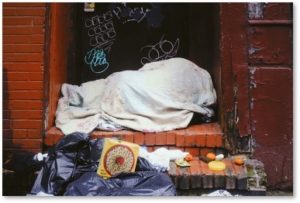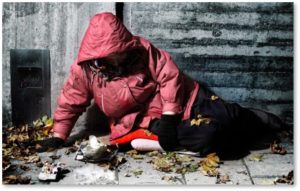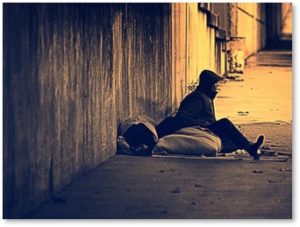Guest Author: Jackie Quinlan
Infectious Diseases Infect Society’s Most Vulnerable
 This year has seen a rise in infectious diseases that have been rare since the Middle Ages. Then it was common for people to live in unsanitary conditions without access to safe water or adequate sewage treatment.
This year has seen a rise in infectious diseases that have been rare since the Middle Ages. Then it was common for people to live in unsanitary conditions without access to safe water or adequate sewage treatment.
The homeless population in California, in particular, has been exposed to outbreaks of typhus and Hepatitis A. This gives us a stark warning of the risk when the most vulnerable members of society do not receive adequate help with housing or health care.
The Spread of Disease on The Streets
The rise in infectious disease has been attributed to the increase in homelessness, which saw approximately 553,000 people in the US without a home in 2018, according to the Annual Homeless Assessment Report (AHAR). Infectious diseases spread rapidly among those sleeping on the streets or in crowded conditions, who often have minimal access to health care and weakened immune systems.
Streets with a high volume of homeless sleepers are often contaminated with human feces and trash, and tend to attract rats. Homeless individuals are often sleep-deprived and malnourished, making them more vulnerable to the diseases that occur as a result.
Although regions with fewer people sleeping on the streets and more sleeping in shelters report fewer outbreaks of disease, these diseases can also be spread when an infected individual visits a shelter.
Are Shelters Doing Enough?
Despite the reduced risk of disease in areas where shelters are more readily available, many homeless people elect not to make use of them, often viewing the streets as a safer option. Although there are many safe shelters, others are more risky environments: drug use is often rife, and many people fear having clothing and other items stolen while they’re there.
 A 2018 KPCC investigation uncovered reports of rats, bedbugs, poor hygiene and mold in some shelters. Poor conditions discourage many homeless people from using these facilities, with many feeling they would be better off on the streets.
A 2018 KPCC investigation uncovered reports of rats, bedbugs, poor hygiene and mold in some shelters. Poor conditions discourage many homeless people from using these facilities, with many feeling they would be better off on the streets.
But those who do choose to use them could be putting their health at risk. As homeless people are more likely to have weakened immune systems than those with access to nourishing food and health care, conditions like those discovered by the KPCC investigation can cause a number of health problems, and create environments in which diseases can thrive.
The Need for Accountability
Many shelters raise money themselves to improve living conditions for the homeless people who use their services. However, those that are not publicly funded are run without public accountability. They are often operated by faith organizations and private non-profits, with a number of separate governmental entities paying for beds. This means there is no centralized system for ensuring that conditions in these shelters are up to standard.
While no individual is to blame for this, and shelter organizers generally fight to protect homeless people, the result is often conditions which are unsafe, unsanitary, and a risk for those who need to use their services. Increased accountability on a national level would ensure that shelters were in a livable condition. This would mean high standards of hygiene, quality facilities, and shelters being inspected regularly for mold.
Improving Homeless Shelters
Removal of mold would encourage clean, dry conditions in which disease would be less likely to thrive, and it would ensure an environment less likely to attract bugs and other pests.
 Furthermore, high standards of cleanliness and hygiene are more likely to be achieved in an environment free from infestations such as mold. Unless there is support on a governmental level, however, it will be difficult for shelters to be held to account, or receive the support they need to improve living conditions.
Furthermore, high standards of cleanliness and hygiene are more likely to be achieved in an environment free from infestations such as mold. Unless there is support on a governmental level, however, it will be difficult for shelters to be held to account, or receive the support they need to improve living conditions.
With the rise of infectious diseases amongst the homeless population, it’s clear that more needs to be done to protect the most vulnerable members of society. Shelters are a valuable resource for those fighting to survive on the streets. But unless there is a call for accountability and improved conditions, many homeless people will avoid them, further putting their health—and potentially the health of those around them—at risk.

I sit on the Board of Directors for a transition shelter here in Florida, specifically for homeless women without children (the only one in Lee County) We are a 501c3 with no government funding. What you say is true, and some of our women opt to remain homeless rather than conform to the rules of the shelter. One clever woman has a $10/month membership to Planet Fitness, gets travel size toiletries from the food pantry, and showers here before going to work – she does not make enough to afford rent and utilities. Florida has a huge homeless population because it is so warm